The USS Gerald R. Ford (CVN-78) stands as a monumental achievement in naval engineering and represents the pinnacle of maritime military power.
Commissioned in 2017, this aircraft carrier is not just the most expensive aircraft carrier ever built, with a total cost exceeding $13 billion; it is also a testament to the advancements in naval technology and design.
The Ford-class carriers are designed to replace the aging Nimitz-class vessels that have served the U.S. Navy since the 1970s, bringing new capabilities and efficiencies to naval operations.
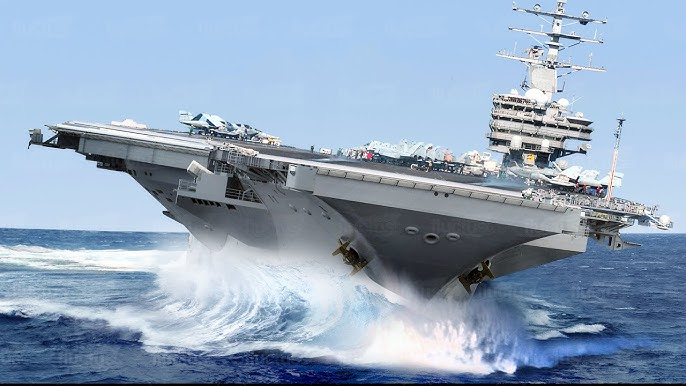
In this comprehensive exploration, we will delve into the USS Gerald R. Ford, examining its features, technologies, and significance in modern naval warfare.
We will also discuss the impact of its design on future naval strategies, addressing why it matters not just to the Navy but to global maritime security.
The Need for a New Class of Aircraft Carriers
Evolution of Naval Warfare
The shifting dynamics of global power and warfare have necessitated the development of advanced naval platforms capable of meeting contemporary threats.
The traditional role of aircraft carriers as floating airbases has evolved, demanding more sophisticated technologies and capabilities.
The USS Gerald R. Ford was conceived to address these needs, ensuring the U.S. Navy remains at the forefront of maritime defense.
Phasing Out the Nimitz-Class
While the Nimitz-class carriers have been reliable workhorses for decades, they have limitations that the Ford-class aims to overcome.
The Navy identified the need for improvements in efficiency, operational capability, and maintenance.
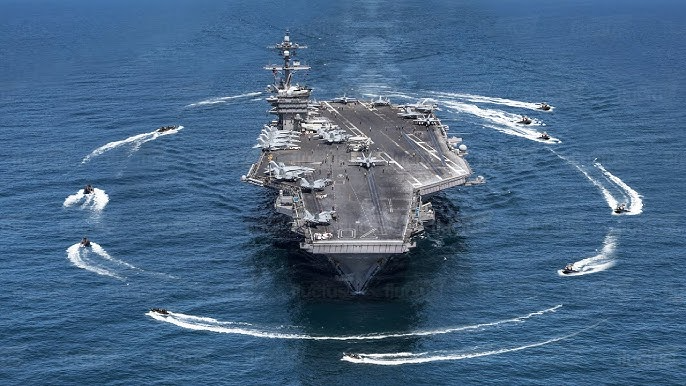
As the threat landscape evolves with the rise of advanced adversaries, investing in a next-generation aircraft carrier became imperative.
Key Features of the USS Gerald R. Ford
Below are key features:
Dimensions and Capacity
The USS Gerald R. Ford is a colossal ship, measuring 1,106 feet (337 meters) in length and 257 feet (79 meters) at its widest point. This massive size allows it to carry an extensive air wing, including a mix of fighter jets, surveillance aircraft, and support helicopters.
Displacement and Speed
With a displacement of 100,000 tons, the USS Gerald R. Ford is designed to withstand significant operational challenges.
Its impressive speed of over 30 knots (56+ km/h) enables rapid deployment and maneuverability in various operational environments, from the Arctic to the tropics.
Nuclear Power Plant
At the heart of the USS Gerald R. Ford’s operational capabilities is its nuclear propulsion system. This state-of-the-art power plant provides 2.5 times more power than previous Nimitz-class carriers, ensuring that the ship can sustain prolonged operations without the frequent refueling that conventional carriers require.
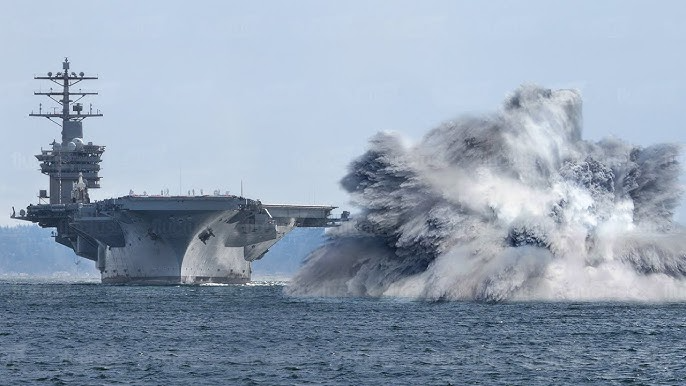
This capability extends the ship’s operational range and effectiveness, making it a formidable presence in any theater of operations.
Enhanced Air Operations
The USS Gerald R. Ford introduces several advancements that significantly enhance its air operations.
Electromagnetic Aircraft Launch System (EMALS)
One of the most notable features of the Ford-class carriers is the Electromagnetic Aircraft Launch System (EMALS). This revolutionary system replaces the traditional steam catapults used on Nimitz-class carriers. EMALS uses electromagnetic energy to launch aircraft, offering numerous advantages:
- Greater Launch Control: EMALS allows for more precise control over the launch process, reducing wear on aircraft and increasing safety.
- Versatility: The system can launch a broader variety of aircraft, including heavier and more advanced models.
- Reduced Maintenance: EMALS has fewer moving parts than steam catapults, leading to lower maintenance requirements and enhanced reliability.
Advanced Arresting Gear (AAG)
The Advanced Arresting Gear (AAG) system is another significant improvement. It replaces the traditional hydraulic arresting gear, providing enhanced performance and reliability.
AAG offers smoother landings for recovering aircraft, which is critical for maintaining operational tempo, especially during combat operations.
Improved Hangar and Deck Operations
Enhanced Flight Deck Design
The flight deck of the USS Gerald R. Ford has been designed with efficiency in mind. The layout allows for improved aircraft handling, faster turnarounds, and increased sortie generation rates.
With a more efficient design, the ship can launch and recover aircraft more quickly, which is essential during high-tempo operations.
Cutting-Edge Technologies
The USS Gerald R. Ford integrates several advanced technologies that enhance its operational capabilities:
Integrated Combat Systems
The ship’s combat systems are designed to ensure that it can operate effectively in contested environments. The integration of advanced sensors and systems provides the crew with real-time data, allowing for rapid decision-making in dynamic situations.
Cybersecurity Measures
In an era where cyber threats are prevalent, the USS Gerald R. Ford has been designed with robust cybersecurity measures to protect its systems and data from potential adversaries.
This proactive approach to cybersecurity ensures that the carrier can maintain operational integrity and effectiveness.
Operational Capabilities
A Versatile Platform
The USS Gerald R. Ford is not just a platform for launching aircraft; it is a versatile command and control hub that can support a variety of missions.
Whether conducting air defense, anti-submarine warfare, or humanitarian assistance, the Ford-class carriers are equipped to respond to diverse challenges.
Global Presence and Power Projection
As a cornerstone of U.S. naval power, the USS Gerald R. Ford plays a crucial role in power projection. Its presence in international waters sends a clear message of strength and commitment to allies and adversaries alike.
The ability to deploy quickly and operate in various regions enhances the United States’ strategic position globally.
Significance in Modern Naval Warfare
Deterrence and Security
The USS Gerald R. Ford contributes to global security by serving as a deterrent against potential adversaries. Its advanced capabilities allow it to respond rapidly to threats and project power where needed, reinforcing the United States’ commitment to protecting its interests and allies.
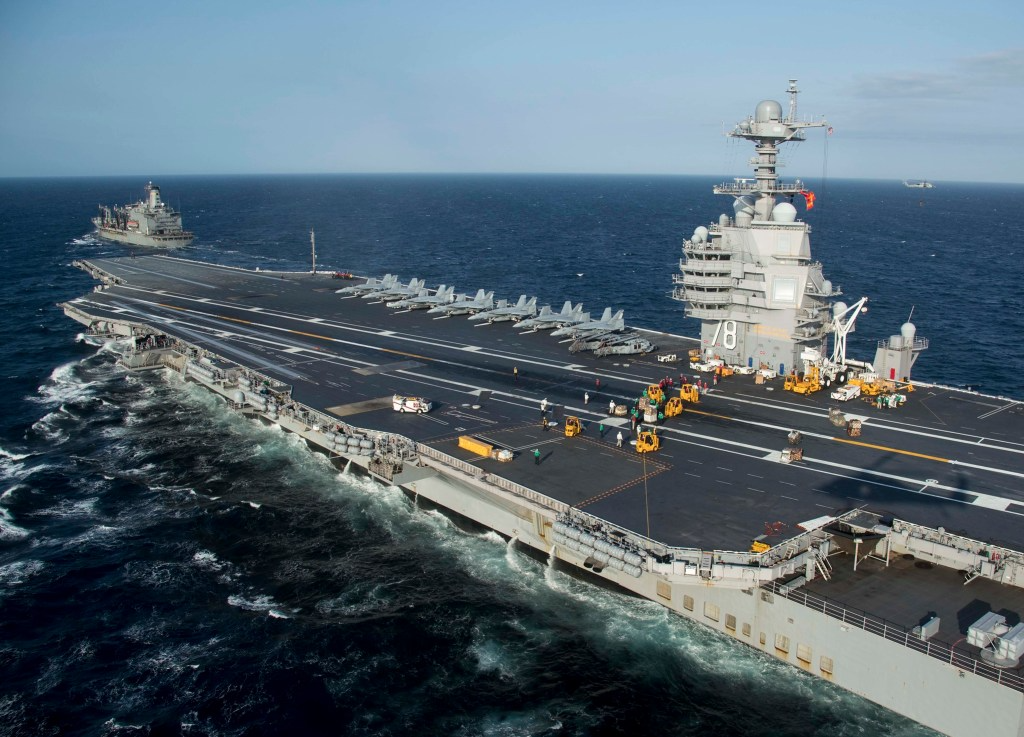
Future of Naval Strategy
The introduction of the USS Gerald R. Ford marks a significant shift in naval strategy. The U.S. Navy is moving toward a future that emphasizes multi-domain operations, integrating air, land, sea, and cyber capabilities.
The Ford-class carriers are designed to operate within this framework, ensuring that the Navy remains relevant in an ever-evolving threat landscape.
Challenges and Criticisms
While the USS Gerald R. Ford is a marvel of modern engineering, it has faced its share of challenges. The development of advanced technologies has not been without setbacks, leading to delays and cost overruns during construction.
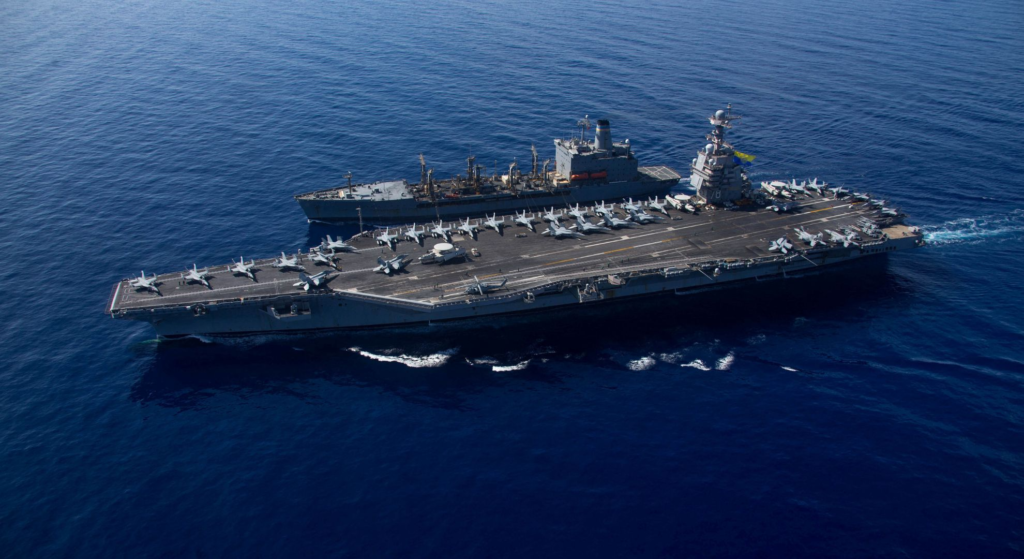
Critics have raised concerns about the overall cost-effectiveness of such a high-priced asset in a rapidly changing military environment.
Balancing Costs and Benefits
As the Navy continues to invest in advanced technologies, there is an ongoing debate about balancing the costs associated with these developments against their operational benefits.
Ensuring that the USS Gerald R. Ford delivers on its promises of enhanced capabilities will be crucial for justifying its price tag.
The Future of the USS Gerald R. Ford
Ongoing Innovations
As the USS Gerald R. Ford continues its service, the Navy will likely seek to enhance its capabilities further. Continuous updates and innovations will be essential to maintaining its relevance in future conflicts.
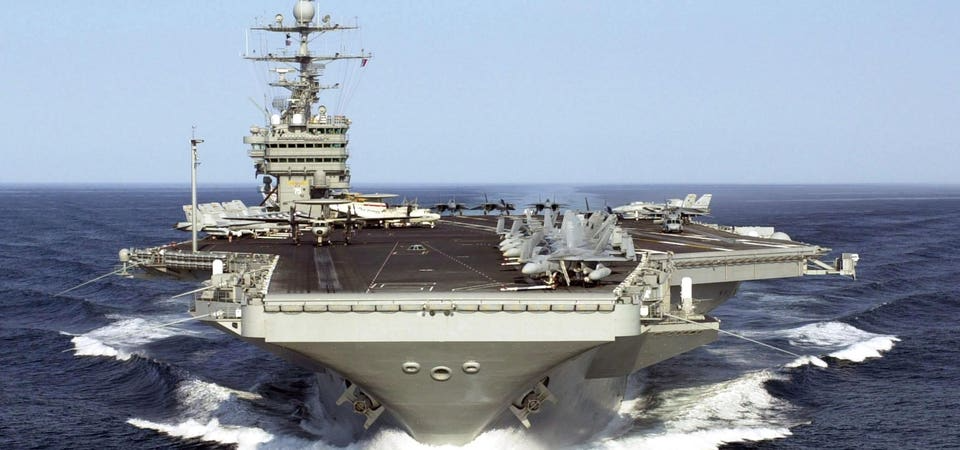
This includes integrating new aircraft, refining operational tactics, and adapting to emerging threats.
A Legacy of Excellence
The USS Gerald R. Ford will undoubtedly leave a lasting legacy within the U.S. Navy. As the first in its class, it sets the standard for future aircraft carriers.
The lessons learned from its design and operational experience will inform the development of subsequent classes, ensuring that the Navy remains at the cutting edge of maritime warfare.
Conclusion
The USS Gerald R. Ford represents a significant leap forward in naval technology and strategy. As the most expensive aircraft carrier ever built, it is a testament to the United States’ commitment to maintaining maritime superiority.
With its advanced capabilities and innovative systems, the USS Gerald R. Ford stands poised to play a critical role in the U.S. Navy’s operations for decades to come.
Through ongoing innovations and adaptations, the USS Gerald R. Ford will continue to shape the future of naval warfare, ensuring that the United States remains a formidable force on the world’s oceans.







